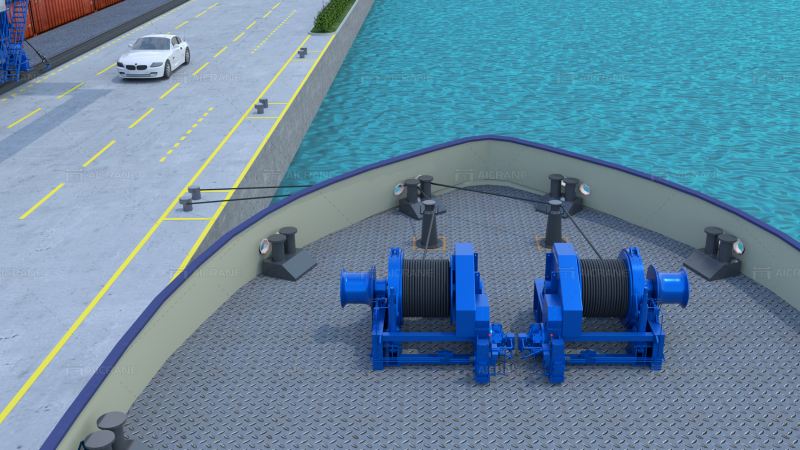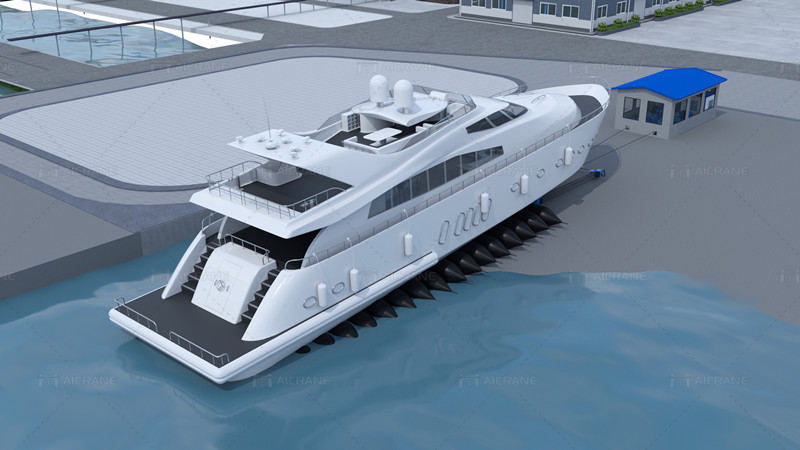Transporting a marine winch safely requires meticulous planning, appropriate equipment, and adherence to safety protocols. Marine winches are heavy and complex pieces of machinery used on ships and offshore platforms for various purposes, including anchoring, mooring, and towing. Their transportation involves several steps, from preparation and loading to transport and unloading. Each step must be executed with precision to prevent damage to the winch and ensure the safety of personnel. This passage outlines the comprehensive process involved in safely transporting a marine winch.

Preparation for Transport
Assessment and Planning
The first step in transporting a marine winch is a thorough assessment of the winch’s specifications, including its weight, dimensions, and any special handling requirements. Based on this assessment, a detailed transport plan should be developed. This plan should include:
The type of transport vehicle or vessel required.
The route for transportation.
Special equipment needed for loading and unloading.
Potential hazards and mitigation strategies.
Selecting Appropriate Transport Equipment
Choosing the right transport equipment is crucial. For large and heavy marine winches, flatbed trucks, lowboy trailers, or heavy-lift vessels may be necessary. The chosen transport method should accommodate the winch’s size and weight while ensuring stability during transit.
Inspection and Preparation of the Winch
Before transportation, the winch should undergo a thorough inspection to ensure it is in good condition. This includes checking for any loose or damaged parts and ensuring that all moving parts are secured. Additionally, the winch should be cleaned to remove any dirt or debris that could affect its operation or pose a hazard during transport.
Loading the Marine Winch
Preparing the Loading Area
The loading area should be clear of obstructions and equipped with the necessary lifting equipment, such as cranes or forklifts. The ground should be stable and capable of supporting the weight of the winch and the lifting machinery.
Using Proper Lifting Techniques
Lifting a marine winch requires expertise and the use of proper techniques to prevent accidents. Here are the key steps:
Positioning the Lifting Equipment: Position cranes or forklifts correctly to ensure balanced lifting. Cranes should be placed on stable ground, and their booms should be extended to the correct length.
Attaching Lifting Slings: Use heavy-duty lifting slings or chains that are rated for the weight of the winch. Securely attach the slings to the winch’s lifting points, ensuring they are evenly distributed to prevent tilting.
Lifting and Placing the Winch: Slowly lift the winch, keeping it steady and balanced. Carefully move it to the transport vehicle and lower it onto the prepared platform.
Securing the Winch on the Transport Vehicle
Once the winch is on the transport vehicle, it must be securely fastened to prevent movement during transit. This can be done using heavy-duty straps, chains, and tensioners. Ensure that the winch is placed in the center of the vehicle to distribute the weight evenly and avoid tipping.
Transporting the Winch
Choosing the Best Route
Select a route that minimizes risks and avoids obstacles like low bridges, sharp turns, and areas with heavy traffic. It’s also important to check for any road or maritime restrictions related to the size and weight of the load.
Driving Precautions
The driver or operator should be experienced in handling heavy loads. Key precautions include:
Maintaining a Safe Speed: Drive at a speed that allows for safe handling of the vehicle and the heavy load.
Avoiding Sudden Movements: Sudden braking, acceleration, or sharp turns can destabilize the load. Smooth and gradual movements are crucial.
Regular Checks: During long journeys, stop periodically to check the winch and securing mechanisms to ensure everything remains in place.

Unloading the Marine Winch
Preparing the Unloading Area
Similar to the loading process, the unloading area should be prepared in advance. Ensure that the ground is stable and clear of obstacles. Position the lifting equipment in place before the transport vehicle arrives.
Using Safe Unloading Techniques
Unloading should follow a methodical process to ensure safety:
Positioning the Transport Vehicle: Park the vehicle in the designated unloading area and ensure it is stable.
Detaching Securing Mechanisms: Carefully remove the straps, chains, and other securing devices holding the winch in place.
Lifting the Winch: Use cranes or forklifts to lift the winch off the transport vehicle. Ensure the lifting process is smooth and controlled to avoid swinging or sudden drops.
Placing the Winch: Move the winch to its designated location and lower it gently into place. Ensure it is stable and secure before detaching the lifting equipment.
Post-Transport Inspection
After the winch is unloaded, conduct a thorough inspection to ensure it has not sustained any damage during transit. Check all components and moving parts for signs of wear or damage. Address any issues immediately to ensure the winch is ready for operation.
Documentation and Compliance
Throughout the transport process, maintain detailed records of each step, including inspections, securing methods, and any incidents that occur. Ensure compliance with all relevant regulations and standards for transporting heavy machinery. Proper documentation can be crucial for insurance purposes and future reference.
Transporting a marine winch safely involves careful planning, the use of appropriate equipment, and adherence to safety protocols at every stage. From preparation and loading to transport and unloading, each step must be executed with precision to ensure the winch’s integrity and the safety of all personnel involved. By following these guidelines, the complex task of transporting a marine winch can be accomplished smoothly and efficiently, ensuring the equipment arrives at its destination in optimal condition and ready for use. Some reliable winch manufacturers provide transportation service.